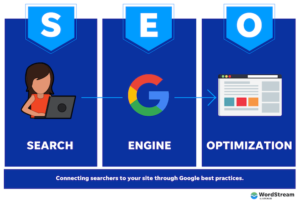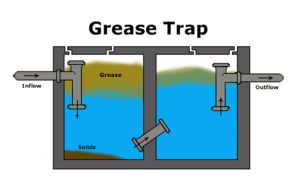SEO is a set of best practices that improve the visibility and usefulness of multiple types of digital content in organic search engine results pages (SERPs). These include web pages, videos, local business listings and news.
Keeping up with SEO research, best practices and updates should be one of your top priorities. This will help you deliver relevant, trustworthy content that increases brand awareness and conversions. Click Here to learn more.

Keywords are an essential part of any SEO, or search engine optimization, strategy. The right keywords can help you attract the right visitors to your site, which can lead to more sales and leads. However, not all keywords are created equal. You should carefully consider your target audience when choosing keywords. This can help you avoid using “filler” words that don’t add any value to your content.
You should also keep in mind that your keywords should be relevant to your audience’s intent when searching for your products or services. For example, if someone searches for “tile,” you should make sure your website offers tile in the form of bathroom tiles, kitchen tiles, or flooring tiles. This way, you can attract the right audience and avoid wasting money on irrelevant traffic.
In addition, your keywords should be incorporated naturally into your content. This means using them in the title and subheading of your content, as well as in your URL and in your images’ alt text. You should also include them in your meta description, which is the text that appears under your search results on Google. Finally, you should use them in your internal links to other pages on your site.
The word “keyword” gets thrown around a lot in the marketing world, but many people aren’t really clear on what it means. In short, keywords are the search terms that people type into a search engine. They are the basis for any SEO strategy, but they also play a big role in PPC (pay-per-click) campaigns.
Singular keywords are tempting because they often have high search volumes, but they’re also usually very competitive and will be difficult to rank for. Plus, you have to know what the searcher is looking for – are they interested in informational content, transactional content, or navigational content? The answers to these questions can be found in your keyword research.
Content
Content is a vital part of SEO, and it’s important to make sure your content is optimized for search engines. This includes keyword research, proper formatting, and a clear structure. It also includes using relevant keywords throughout your content and ensuring that your website’s backlinks are high quality. Without content, you won’t be able to rank well in search engine results pages (SERPs).
The term “content” has many definitions, but for SEO, it refers to the topics and matter treated in a written work. It can be in the form of articles, blog posts, website pages, or even audio or visual presentations. The ultimate goal of content is to inform, entertain, or enlighten its audience.
SEO content is created specifically for search engines, and it is intended to help your website gain visibility and traffic through search engine optimization. It is often used as a complement to content marketing, which is a popular tactic that helps businesses reach their target audience.
It’s important to remember that SEO is a continuous process, and you need to continue creating quality content in order to maintain or improve your search engine rankings. This will help you attract more targeted visitors, and it will increase the likelihood that those visitors will take action on your website.
Another important consideration when creating SEO content is to ensure that it is unique and valuable. Duplicate content will not only hurt your search engine rankings, but it may also harm the user experience. It’s also important to keep in mind that SEO best practices are constantly evolving, and you should regularly review and update your content to ensure it meets current standards.
Lastly, it’s important to remember that SEO content should be readable by your audience. This means using easy-to-understand language, writing short sentences, avoiding passive voice, and having a consistent tone of voice. In addition, it’s essential to use accurate information and avoid over-promising your content. This will help you establish yourself as an expert in your field and improve your credibility. It will also make your content more attractive to potential visitors, as they’ll be more likely to trust your site and the information it provides.
Link building
Link building is the process of getting other websites to link to yours. It’s a crucial part of SEO, and can help you rank higher in search results. However, it’s important to remember that low-quality links can hurt your rankings. So be sure to follow best practices when building links. There are many different ways to build links, including: Adding them manually – This involves going to other websites and adding your link there. Asking for links – This involves emailing website owners and asking them to link to you. Buying links – This involves paying for links or getting them from a service. Earning links – This means creating and promoting something that’s so remarkable that people will link to it naturally.
A link is a hyperlink that leads to another page on the Internet. It is the most important factor in determining a website’s ranking in search engine results pages. It also provides a way for search engines to crawl the web and understand what the content is about.
There are many different link building techniques, but they all share the same goal: to get other websites to link back to yours. This is because Google views these links as votes of confidence for your content and relevance.
However, not all links are created intentionally by SEOs and marketers. Some are created for a variety of reasons, such as when journalists write about a new technology and include a link to the source. Others are created by people who use a product or service and love it so much that they create a link to the company that sells it.
As the internet has evolved, so have the ways that businesses approach link building. While it remains one of the most important ranking factors, it is no longer the only way to improve your website’s visibility in search engines. Instead, a holistic approach to search engine optimization is essential for long-term success. This includes a strong technical SEO foundation, on-page optimization, great content, and a healthy backlink profile.
Analytics
SEO analytics are the key to measuring the effectiveness of your SEO campaigns. Using SEO data analysis, you can identify the best performing keywords and optimize your website to increase traffic and improve rankings. SEO data analysis is a vital part of every agency’s digital marketing strategy. It gives you concrete, actionable insights on how your optimization efforts are working and what isn’t, so that you can make better decisions sooner.
Search engine optimization is an ongoing process that requires patience to see results. As a result, it is important for agencies to use tools that allow them to track SEO progress over time and provide reports to clients. These tools should be easy to understand and provide insights that help you determine how well your SEO strategy is working.
These metrics can include organic search traffic, keyword ranking changes, new and lost backlinks, a site health checkup score, and more. The goal of any SEO tool is to help you take raw data and turn it into meaningful insights that can be used to improve your campaign and achieve your client’s business goals.
One of the most important metrics to track is page speed, which can be an indicator of how fast a website loads and how responsive it is. This is especially important for mobile users, who are increasingly impatient with websites that load slowly. As a result, slow sites are likely to lose traffic and rank lower in search engines.
Another metric to track is exit pages, which are the last pages a user visits before leaving your site. This metric can be useful in identifying problems with your site, such as a low conversion rate or a high bounce rate. It can also be helpful in optimizing your content for maximum performance.
It’s also important to monitor competitor SEO data so that you can keep up with the changing landscape of SEO. By analyzing your competitors’ SEO strategies, you can implement similar tactics to improve your own performance and rank higher in search results. A white-labeled rank tracker can help you do this by consolidating data from several different sources into a single report.


